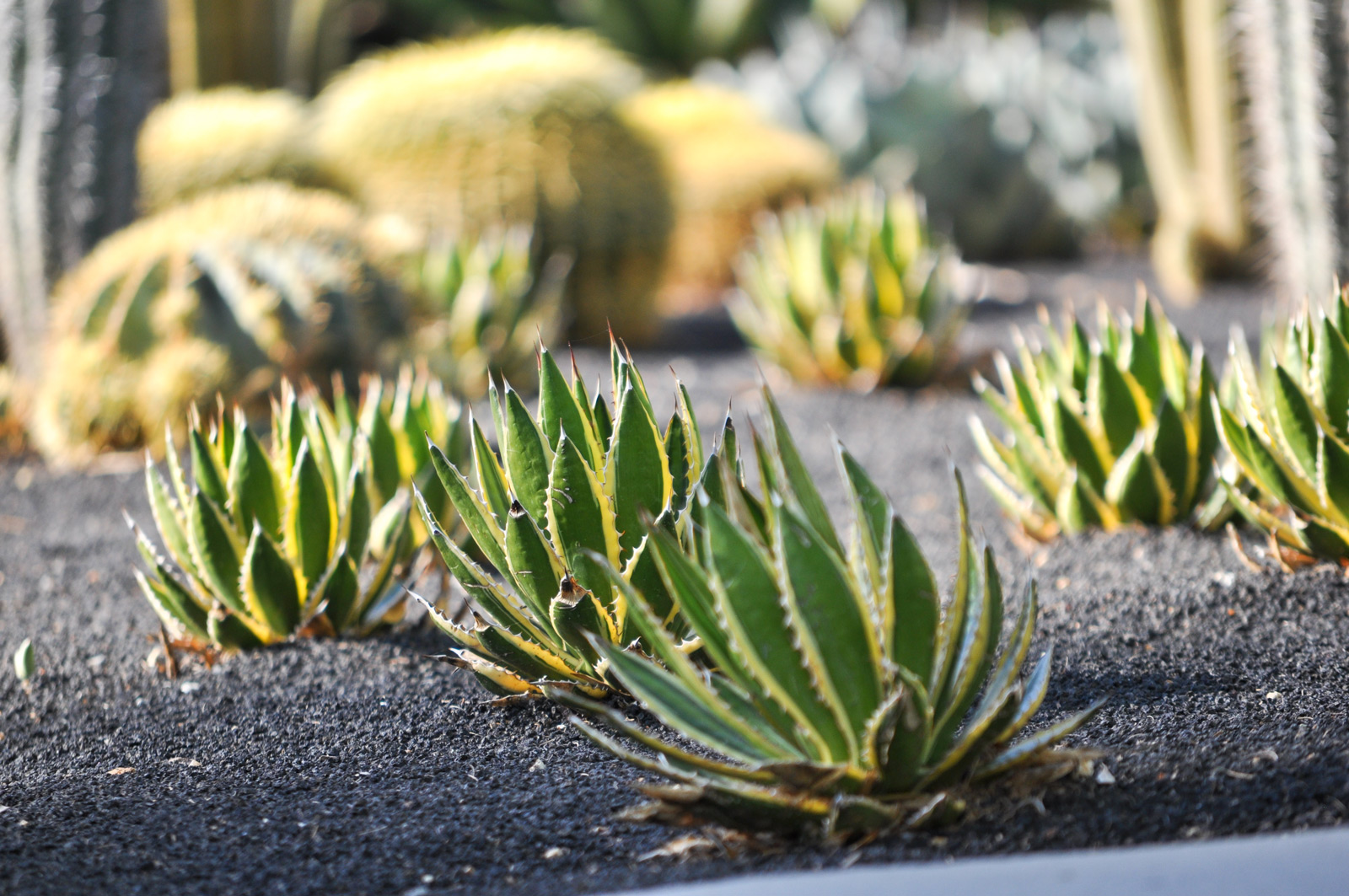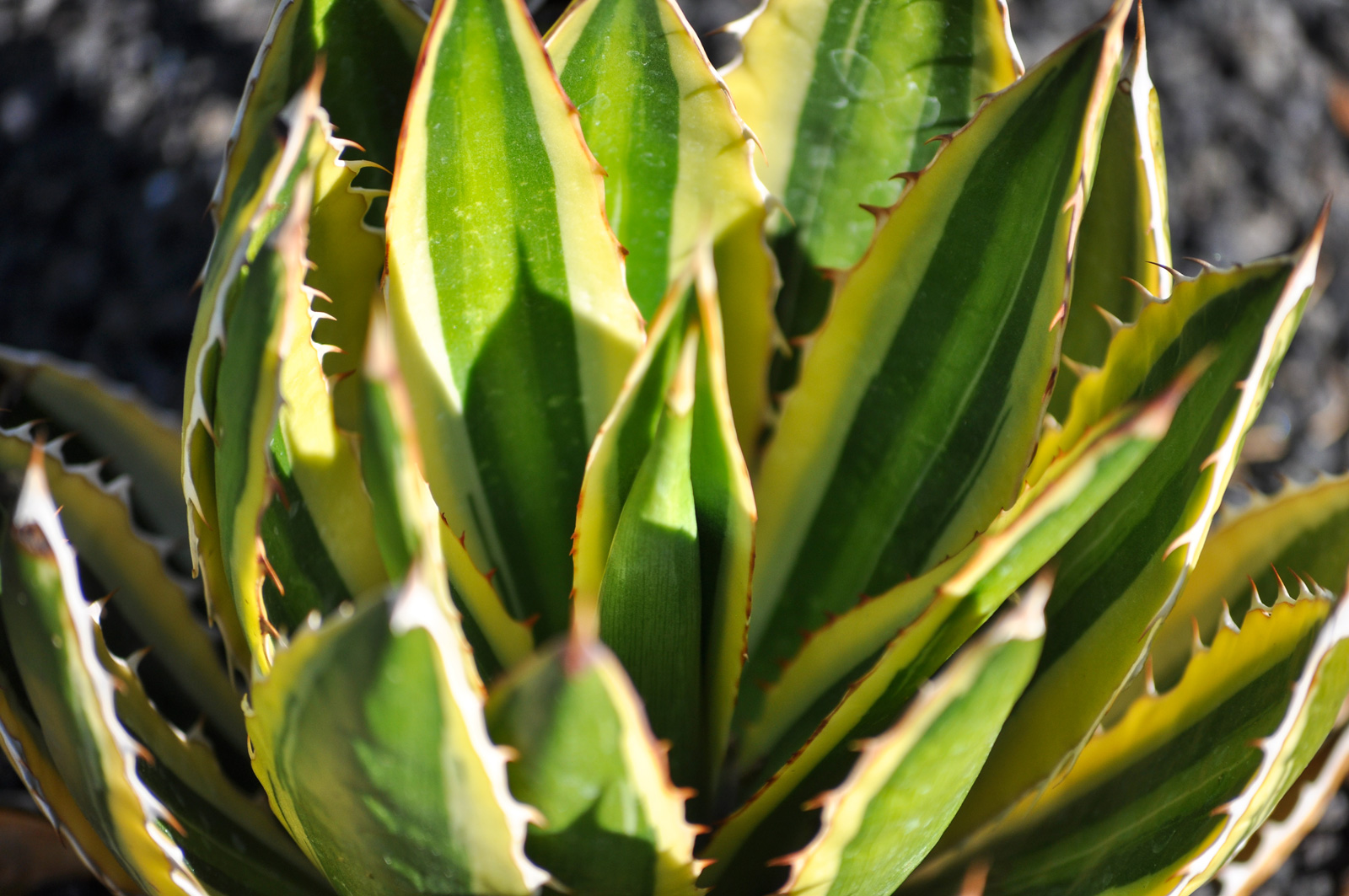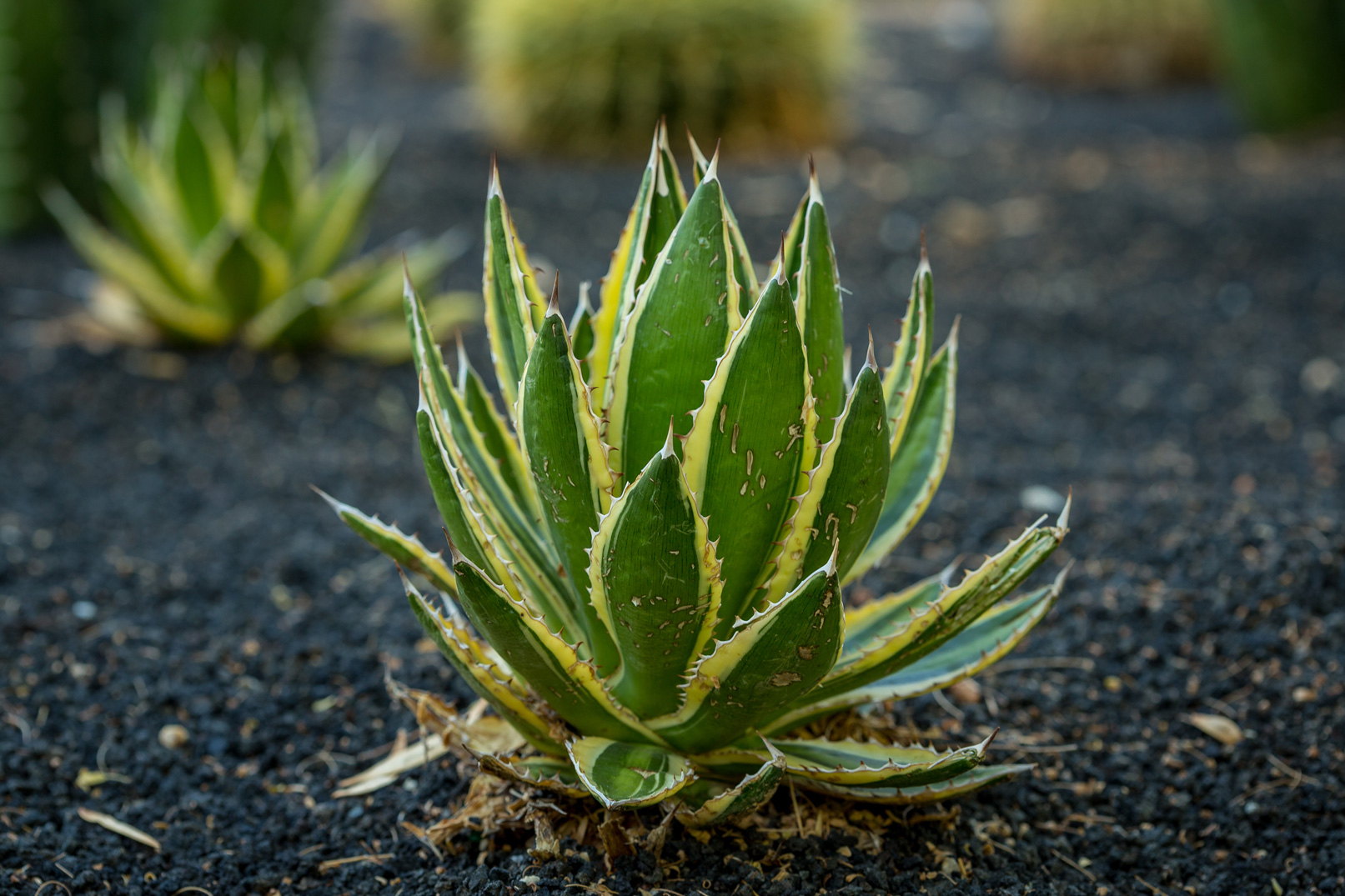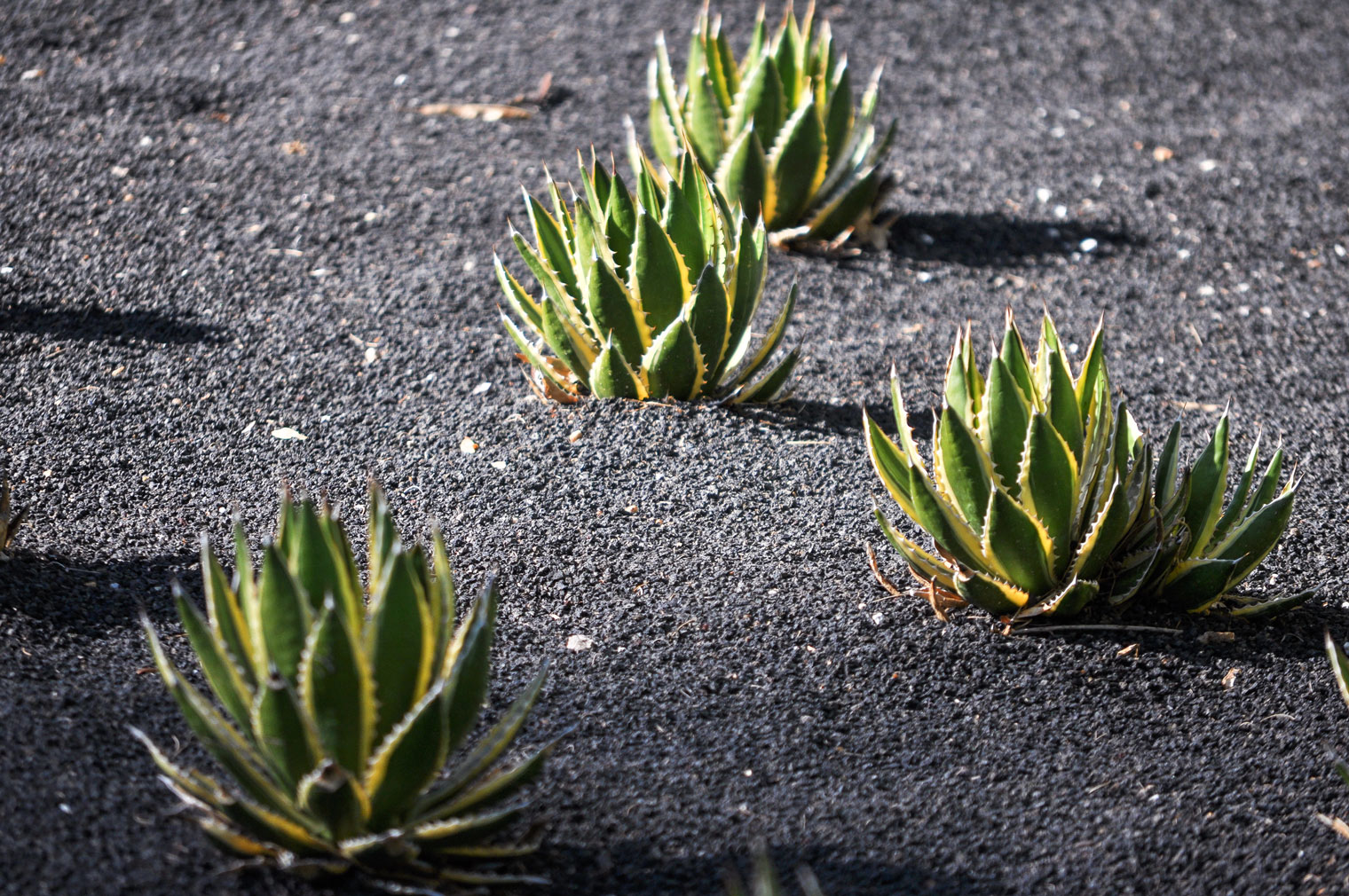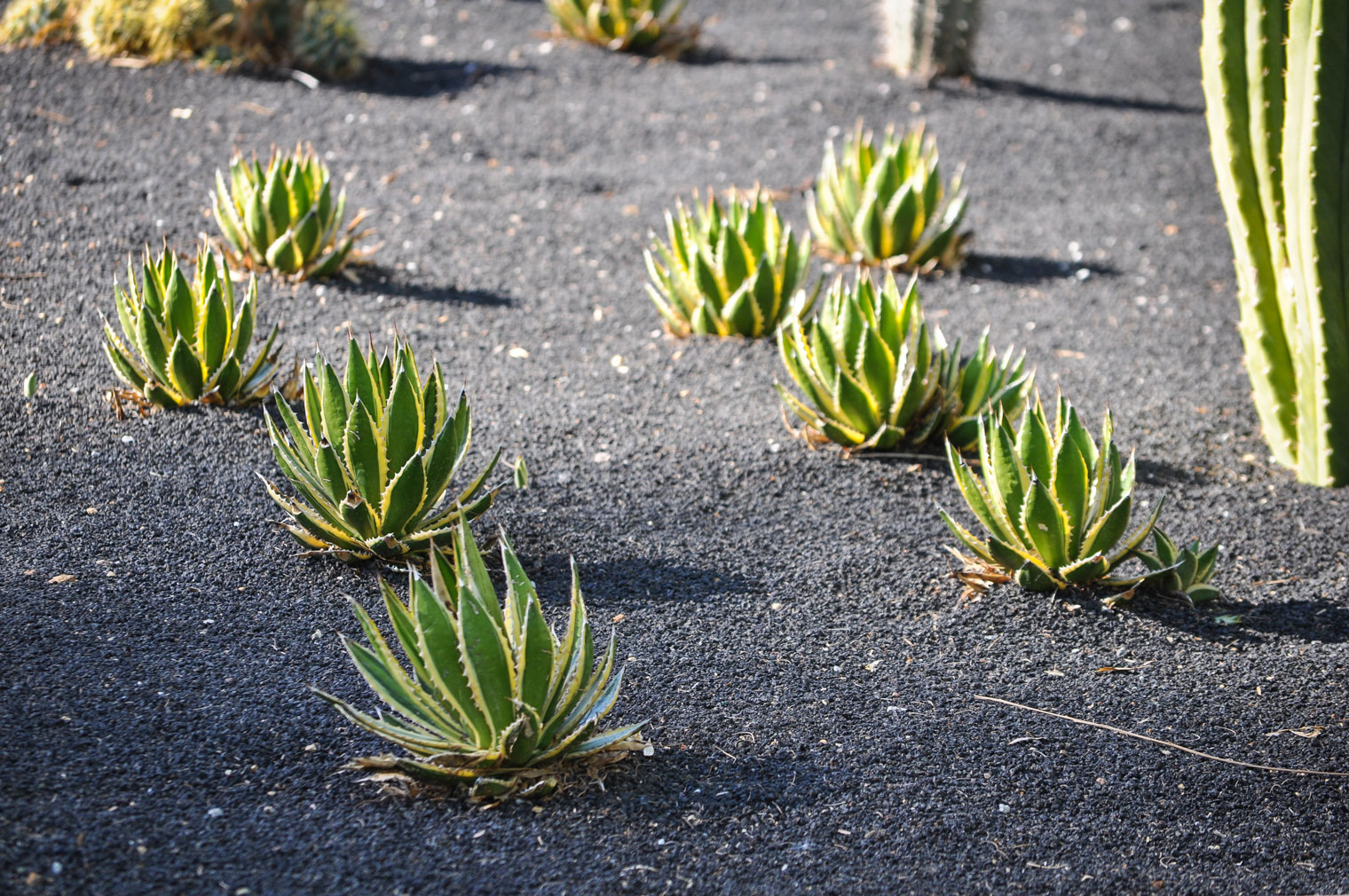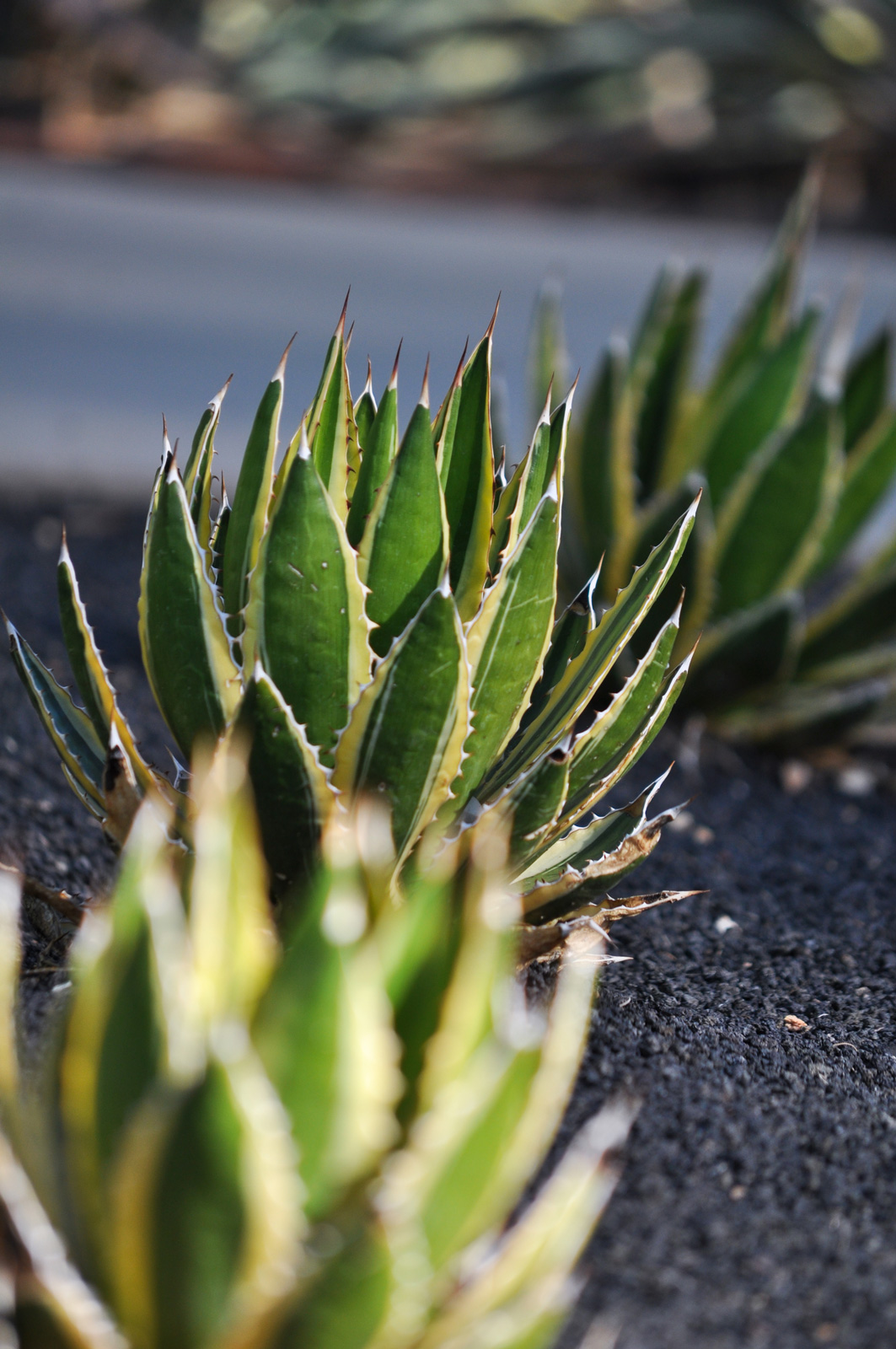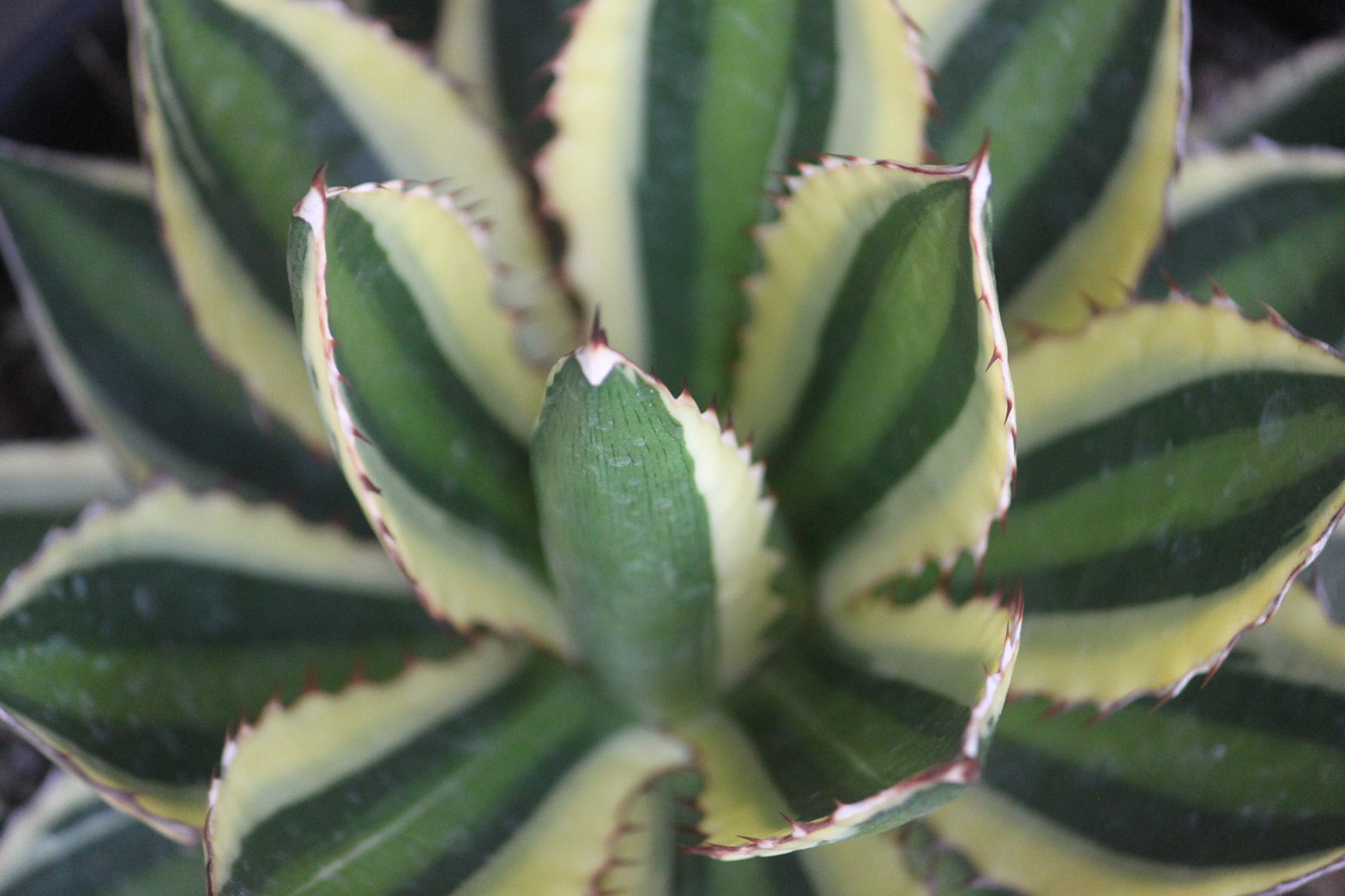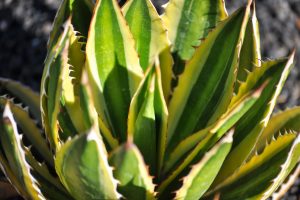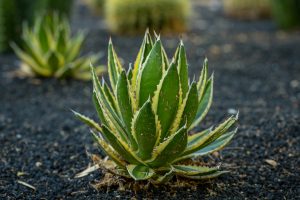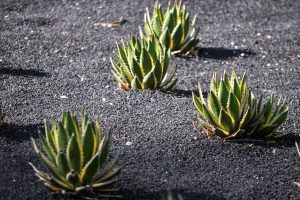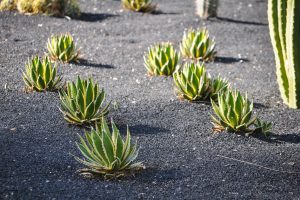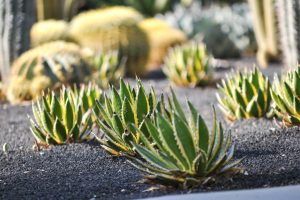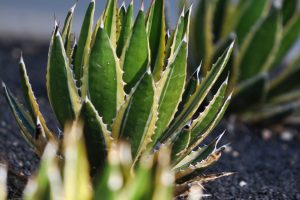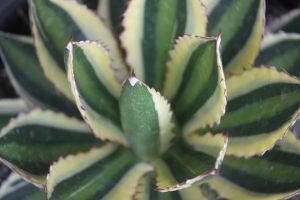In two specimen beds at the south side of the Center, there are a few small, very decorative Thorn-crested Agave. Normally this variety grows to a maximum of about 2 feet, but there are many hybrids of various sizes and colors. The variety at Sunnylands is ‘quadricolor,’ meaning its leaves display four colors. There are three distinct shades of green striping on the leaves that are framed with red teeth along the margins.
When planted in full sun, you will see a pink blush. This is a process which is visible in other desert species as well. You may notice it particularly on succulents. As part of the photosynthesis process, green chlorophyll in plants is the mechanism that captures light and converts it to food, but too much sunlight can also damage cells. Turning off some of those light receptors can protect plants. This pink blush is one photo-protective mechanism that reduces the plant cell damage from sun exposure. In the case of agaves, it has been attributed to the presence of Anthocyanins (flavonoid pigments) within the plant’s tissue. The exact process and triggers are still being explored. For aloes, the mechanism is due to the presence of rhodoxanthin (see Medicinal Aloe).
A native of the United States and Mexico, Thorn-crested Agave is found in the wild at elevation ranges between 100 and 5,000 feet.
At maturity, it sends up a 12-foot spike that forms yellow-green blooms. As an agave, it will bloom once at end of life. However, during its lifespan it will have also produced offsets, which are clones of itself, often referred to as pups. So in addition to propagation from flowering, the clones can be replanted as well. This species has not yet bloomed at Sunnylands.
